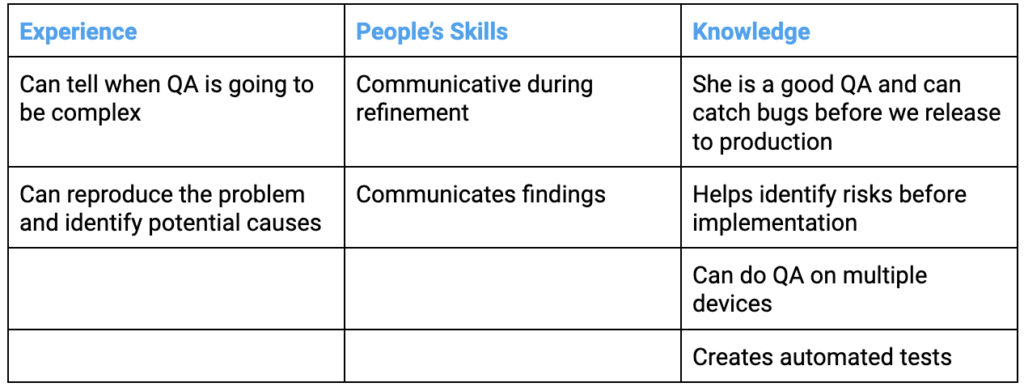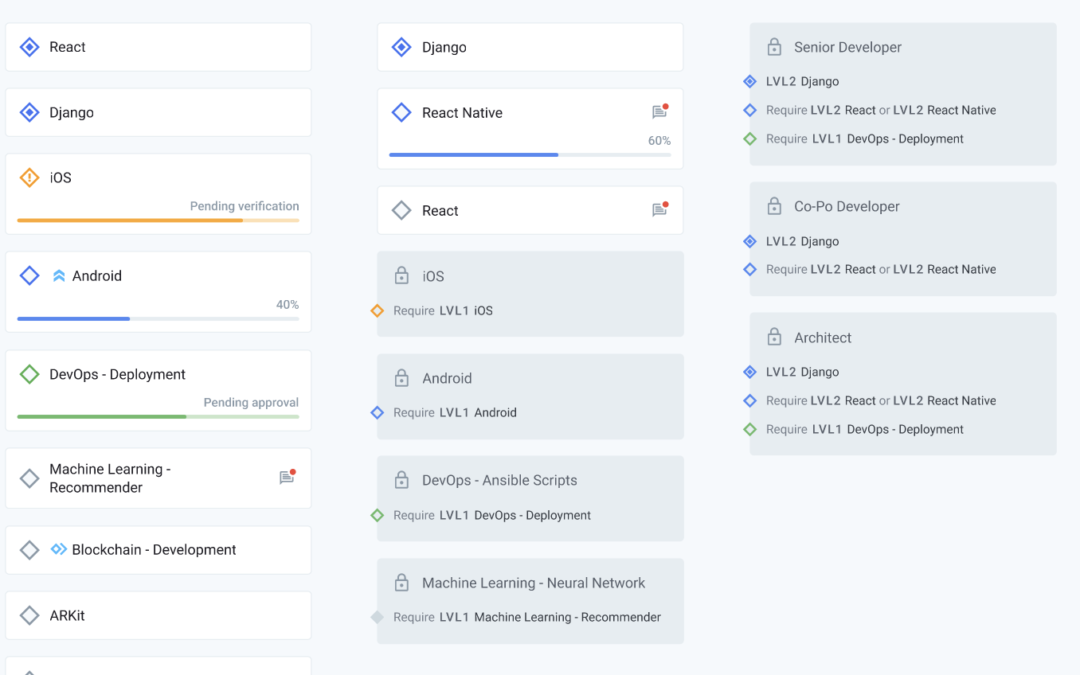This is a continuation of our “Get started with Journeys for Your Teams” blog post series where we described how to get started with Agile Growth™ and taking the first step into defining the first Journey for your team.
In this blog post, we’ll focus on Step 2 of the Journey creation process: Grouping by Similarity. Once you have collected the descriptions and details from Step 1, it’s time to identify common ideas and group them by similarity or even remove ideas if they are duplicated. Below you will find some guidelines that will help you get through this exercise:
- Start by reviewing the descriptions and identifying recurring themes, shared skills, or common areas of expertise. Look for similarities in technical skills, soft skills or experience. These patterns will set the base for your category creation.
- Create categories that reflect the shared attributes and skills within the role you are currently working on. Examples of categories are: people skills, Microsoft Excel skills, communication, data science, backend, devops. Aim to have different categories that describe the important aspects of the role.
- As you create categories, ensure that they cover a broad range of skills and knowledge relevant to the role. Be open to refining and expanding these categories as needed to represent the requirements of the role. You can seek input from team members, subject matter experts, or those who work closely with individuals in the role.
- If the categories don’t jump out at you, first group the ideas from Step 1 by similarity and find names then.
Through this series of blog posts we will continue working on defining a Journey for our QA role. Below you can see the progress we made on Step 2 going from the description of the ideal QA to grouping the skills based on similarity.
Step 1 Example

Grouping Example

In the next blog post, we’ll dive into Step 3 – Modeling, where we’ll explore how to transform these categorized descriptions into tangible and achievable goals.
